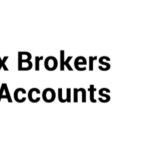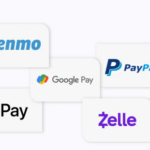What Is Trapeza Protocol (FIDL)?
Trapeza Protocol is a decentralized reserve currency protocol available on the BSC(Binance Smart Chain) based on the FIDL token. Each FIDL token is backed by a basket of assets (e.g. BUSD, wBNB, FIDL-BUSD LP, etc.) in the Trapeza Protocol treasury, giving it an intrinsic value that it cannot fall below. Trapeza Protocol also introduces unique economic and game-theoretic dynamics into the market through staking and bonding.
Trapeza Protocol Facts
| Compound | Facts |
|---|---|
| Defi Coin Name | Trapeza Protocol |
| Short Name | FIDL |
| Explorers | Click Here To View Explorers |
| Ethereum Contract | 0x414a36a4b79Ee1D4b454AB798E4179ffC00b1641 |
| Chat Option | Click Here To Visit Compound Chat |
| Support | 24/7 |
| Official Website | Click Here To Visit |
What is the point of Trapeza Protocol?
Trapeza Protocol Defi goal is to build a policy-controlled currency system, native on the BSC network, in which the behavior of the FIDL token! In the long term, we believe this system can be used to optimize for stability and consistency so that FIDL can function as a global unit-of-account and medium-of-exchange currency. In the short term, we intend to optimize the system for growth and wealth creation.
Flexible Price
The live Trapeza Protocol price today is $33.98 USD with a 24-hour trading volume of $23,131.25 USD. They update FIDL to USD price in real-time. This is down 5.70% in the last 24 hours. The current CoinMarketCap ranking is #5399, with a live market cap of not available. The circulating supply is not available and the max. supply is not available.
How can I benefit from Trapeza Protocol?
The main benefit for stakers comes from supply growth. The protocol mints new FIDL tokens from the treasury, the majority of which are distributed to the stakers. Thus, the gain for stakers will come from their auto-compounding balances, though price exposure remains an important consideration. That is, if the increase in token balance outpaces the potential drop in price (due to inflation), stakers would make a profit.
The main benefit for bonders comes from price consistency. Bonders commit a capital upfront and are promised a fixed return at a set point in time; that return is in FIDL and thus the bonder’s profit would depend on FIDL price when the bond matures. Bonders benefit from a rising or static FIDL price.
Initial Network State
The initial goal is not to find a stable price. This may seem antithetical to currency aspirations, but they ensure you it is not. Trapeza Protocol can be tuned to optimize for different things. The main tradeoff is volatility and profitability versus stability and consistency. With volatility and profit comes growth; this is what they want early on.
With tight policy and scale, They should function well as a stable asset. Upward and downward pressures should stabilize at some non-intrinsic value. With loose policy, regardless of scale,It has the potential to act as a wealth creation machine. The market premium of the token measures the positive sum of the game; all extrinsic value is new wealth created.
Market Dynamics
There are several feedback mechanisms within the system. These are self-reinforcing behaviors; action 1 increases the rate of action 2 which increases the rate of action 1. Circular mechanics like this are the drivers of exponential expansion and boom and bust cycles. Loose policy states enable these dynamics while tight policy states suppress them.
Who runs Trapeza Protocol?
Currently most of the decisions are taken by the core team, but Trapeza Protocol Defi expect to be able to turn this into a DAO-governed model as soon as possible!
Player Goals
Stakers care primarily about their FIDL balance.
While price is important in valuing their FIDL and determining the rate at which it grows, it is not the main goal. A smart staker cares only about the short and long term growth prospects of the network. That growth translates into wealth via price and balance growth.
Bonders care primarily about FIDL price.
When they bond, these users lock in a fixed reward in FIDL. Therefore, network profitability is only helpful in calculating opportunity cost or gain; bonders have their FIDL gains locked in.








